Music, Movement, and Mood: Using Playlists to Beat Social Anxiety
🌈 Why Music Helps When Social Anxiety Spikes
If you’ve ever felt your chest tighten on the way to a party or your thoughts race before a meeting, you know social anxiety can hijack your body. Music gives you a portable remote control for that stress response. In minutes, the right track can slow your breathing, shift your posture, and change the story running in your head.
Here’s why:
Rhythm entrainment: Your breath, heart rate, and movement naturally sync to external rhythm. Calmer tempos → calmer physiology.
Neurochemistry: Pleasurable music increases dopamine and can reduce stress hormones, supporting motivation and approach behaviors.
Attention shift: Music captures working memory, leaving less bandwidth for self-critical loops.
Embodiment: Even tiny movements (swaying, step-touch) send “I’m safe” signals to your brain via posture and proprioception.
This guide turns those principles into a toolkit you can use before, during, and after social situations—without needing a perfect playlist or hours of practice.
Looking for online therapy for people with Social Anxiety? Click Here.
🧠🎶 The Science of Sound on Stress (Quick and Practical)

Tempo & arousal: Lower tempos (≈55–70 BPM) tend to downshift arousal; moderate tempos (≈80–110 BPM) sustain focus; higher (≈110–130 BPM) boost energy. Your sweet spot is personal—use ranges as a starting point.
Meter & groove: Even, predictable rhythm calms. Syncopation and big drops can energize—great for pre-event prime, not for grounding.
Harmony & key: Simple harmony and stable chords soothe. Bright major keys can lift; mellow minor keys can soothe or feel heavy depending on lyrics and context.
Vocals & lyrics: Words anchor attention. Supportive or non-linguistic vocals (oohs/ahs) can be calming. If lyrics trigger rumination, go instrumental.
Timbre: Soft piano, acoustic guitars, strings, pads, and warm bass tend to relax; sharp, metallic, or high-brightness sounds can agitate when you’re on edge.
Personal history: Songs tied to safe or joyful memories regulate fastest. Curate for you, not for an algorithm.
🕺🔄 Movement: The Missing Link That Multiplies Music’s Effect
You don’t need a workout—micro-movement shifts state fast:
Sway: Stand or sit, shift weight heel-to-heel at half-tempo. Great for labs, lines, or elevators.
Step-touch: Small side steps in time with the beat; shoulders drop, jaw unlocks.
Box step (tiny): Forward-side-back-side. It occupies motor circuits that often fuel fidgeting.
Shake reset (30s): Lightly shake arms/legs to music, then stillness for 10s; repeat.
Postural wave: Inhale: lengthen spine; exhale: soften shoulders—on every phrase change.
Pairing even 60 seconds of movement with a track beats silent stillness for most anxious states.
🧰🎧 Build Your Anti-Anxiety Playlist Toolkit
Think in jobs rather than genres. Create small playlists you can grab as needed.
1) 🫧 Downshift (55–70 BPM)
Purpose: Reduce physiological arousal when you’re jittery.
Feel: Warm, predictable, low-bright.
Sounds: Piano, pads, strings, soft drums or no drums.
Use: Breathwork timing; commute decompression; bathroom reset at events.
2) 🔭 Steady Focus (80–100 BPM)
Purpose: Hold calm alertness while you get ready.
Feel: Gentle groove, minimal lyrical content.
Sounds: Lo-fi beats, downtempo, mellow acoustic.
Use: Wardrobe prep, light makeup, route planning.
3) 🚪 Prime & Approach (100–120 BPM)
Purpose: Lift mood and intention to engage.
Feel: Uplifting, confident, clean beat.
Sounds: Pop, funk, house, Afrobeat, light EDM—choose what feels empowering.
Use: Last 5–10 minutes before arrival; first steps into the room.
4) 🧲 In-Room Grounding (ambient/no-drama)
Purpose: Quiet internal noise without isolating.
Feel: Pads, gentle textures, non-intrusive.
Use: Low volume in one ear (transparency mode), or mentally recall a grounding track and breathe to its imagined tempo.
5) 🌙 Aftercare & Decompress (50–65 BPM)
Purpose: Prevent “post-event spike” and support sleep.
Feel: Soft, slow, minimal.
Use: Wind-down ritual; journaling; stretches.
🧪 Simple Self-Test: Calibrate Your BPM
Find baseline: Sit, breathe naturally for 30s, note your mood (0–10 calm scale).
Track A (≈60 BPM): 1 minute, sway + extended exhales (4 in / 6 out). Re-rate calm.
Track B (≈90 BPM): 1 minute, small step-touch + 5/5 coherent breathing. Re-rate.
Track C (≈115 BPM): 1 minute, posture-lifting groove + natural breath. Re-rate.
You just discovered your fastest shift zone. Save that data: it’s your personal preset.
🧩 Slot-Based Playlists (No Song Names Needed)
Use these slot recipes to build fast:
🌅 Morning Confidence (8 slots)
65–75 BPM, warm instrumental (wake gently)
80–90 BPM, lo-fi groove (organize)
90–100 BPM, light vocals (intent)
100–110 BPM, bright groove (energy up)
105–115 BPM, power posture (dress/pack)
95–100 BPM, refocus (checklist)
70–80 BPM, breath pacing (4/6)
60–70 BPM, gratitude note (1 min)
🚗 Pre-Event Prime (7 slots, 9–12 min)
80–90 BPM, steady pad + breath 4/4 (arrive in body)
90–100 BPM, mellow groove (visualize entry)
100–110 BPM, confident vibe (affirmations)
110–118 BPM, lift (shoulders/neck roll)
110–120 BPM, victory feel (doorway moment)
90–95 BPM, reset (if over-amped)
60–70 BPM, 3 physiological sighs + exhale-heavy
🥂 In-Event Grounder (4 slots, 4–6 min)
60–70 BPM, one-ear low volume (bathroom break)
70–80 BPM, box step micro (hallway)
80–85 BPM, coherent breathing 5/5
Silent 30s: scan feet, jaw, shoulders
🌜 Post-Event Release (6 slots)
70–80 BPM, gentle groove (shake tension)
65–75 BPM, longer phrases (exhale > inhale)
60–65 BPM, piano/strings (journal)
55–60 BPM, minimal (sleep runway)
White/pink noise, low (optional)
Silence (lights down, 1 minute)
🌬️ Breathwork That Syncs With Beats

Coherent breathing (5/5) pairs with ≈60 BPM (one breath per two beats).
Extended exhale (4/6 or 4/8): choose slower tracks (≤65 BPM).
Physiological sigh (2 inhales + long exhale): do on down-beat every 10–15 seconds with ambient tracks.
Box breathing (4-4-4-4): use sparse music with clear measures; count silently with the bars.
Tip: If lyrics tug attention when you’re anxious, switch to instrumental for breath pacing, then back to vocals for mood lift.
Want to try Breathwork? Click Here.
💪 60-Second, 3-Minute, and 10-Minute Movement Flows
⏱️ 60-Second “Doorway Reset”
20s sway (feet planted, hips soft)
20s shoulder rolls + jaw unclench on exhale
20s 4/6 breathing while raising/settling chest with the phrase
⏱️⏱️⏱️ 3-Minute “Hallway Confidence”
1 min step-touch at 85–95 BPM
1 min micro squats + scapular squeezes (posture)
1 min coherent breathing to a pad or lo-fi beat
🔟 10-Minute “Pre-Event Prime”
2 min box breathing to 60–70 BPM
3 min gentle groove + posture lift (100–110 BPM)
3 min confidence track (110–120 BPM) with power pose intervals
2 min downshift (70–80 BPM) + intentions
🧠 Therapy Tie-Ins: Make Music Part of the Plan
CBT + playlists: Use a steady-focus list while writing thought records; switch to prime list before exposures.
Exposure therapy: Start with low-stakes social tasks. Use the pre-event prime, then the in-room grounder for coached breaks.
Behavioral activation: Schedule “mood-first” movement + music to kick-start approach behaviors when avoidance creeps in.
Somatic work: Therapists can cue breath/micro-movement to rhythm when processing anxious sensations.
Looking for online therapy for people with Social Anxiety? Click Here.
🌿 Supplements That Complement Music & Movement
Not required—but if you use them responsibly, they can smooth edges:
L-theanine (100–200 mg): Calm focus; pairs well with a small tea/coffee if tolerated.
Magnesium glycinate (200–300 mg/day): Baseline tension reducer; supports sleep post-event.
Omega-3 EPA/DHA (1–2 g/day): Mood resilience over weeks.
Ashwagandha (300–500 mg/day): May lower stress reactivity for some.
⚠️ Always check interactions and personal tolerances with a clinician, especially if you take medications or are pregnant.
Looking for supplements for people with Social Anxiety? Click here.
🧯 Troubleshooting & Safety
Over-amped by music? Drop to 55–65 BPM instrumental; exhale longer than inhale for 60 seconds.
Lyrics trigger rumination? Swap to wordless vocals or pads.
Noise sensitivity? Use low volume, one earbud with transparency mode, or bone-conduction headphones.
Public use awkward? Pocket movement (sway, breath pacing) works.
Volume safety: Keep playback <70 dB for long sessions; avoid extended high-volume prime lists.
Cultural fit: Choose music that feels like you—familiarity accelerates regulation.
ADHD co-presentation: Slightly higher tempos (95–115 BPM) can help harness focus; still downshift for breathwork.
🎯 A Field Guide: Before, During, After
2–3 hours before: Regular meal (protein + fiber + fat). Light walk with steady-focus list.
60 minutes before: Pre-event prime (100–115 BPM), posture tune-up, intention.
10 minutes before: One confidence track, one breath-paced track.
Entry moment: Shoulders back, small smile, step to the beat as you cross the threshold.
If nerves spike: Bathroom or balcony; 90 seconds of downshift + physiologic sighs.
After: Post-event decompress list; 3 lines in a journal: one win, one gratitude, one tweak for next time.
📈 Track What Works
SUDS (0–10) quick ratings: Before playlist, after playlist, after event.
Two-word check-ins: “Body feels ____. Mind feels ____.”
Tweak by data: Keep what reliably lowers your rating by ≥2 points in ≤3 minutes.
♿ Accessibility & Inclusivity
Chair-friendly options: Seated sway, ankle pumps, shoulder rolls in time with music.
Hearing differences: Favor low-frequency tactile bass or wearable vibration; visual metronomes help breath pacing.
Sensory-safe spaces: Quiet corridors, outdoors, or car resets count—location is just a container for your practice.
🧭 A One-Page Ritual (Save This)
Track: 90 BPM, calm groove → step-touch 60s
Track: 60–70 BPM, soft pad → 4/6 breathing 60s
Track: 110–115 BPM, empowering → power pose 45s + smile 15s
Track: 90–95 BPM, focused → set intention (one sentence)
Track: 60–70 BPM → 3 physiological sighs, shoulders soften
Walk in.
🌟 Final Take
Music is not a luxury here—it’s a fast-acting, portable regulator. Pair it with tiny movements and breath pacing, and you’ve got a repeatable way to turn dread into approach, rumination into rhythm, and jitters into calm confidence. The right song, at the right tempo, with the right micro-move, can change your whole evening.
📚 References (selected)
Chanda, M. L., & Levitin, D. J. (2013). The neurochemistry of music. Trends in Cognitive Sciences.
Thoma, M. V., et al. (2013). The effect of music on the human stress response. PLoS ONE.
Koelsch, S. (2010). Towards a neural basis of music-evoked emotions. Trends in Cognitive Sciences.
Karageorghis, C. I., & Priest, D.-L. (2012). Music in the exercise domain: A review and synthesis. International Review of Sport and Exercise Psychology.
Bernardi, L., et al. (2006). Respiration-entrained music and cardiorespiratory control. Circulation.
Brown, R. P., & Gerbarg, P. L. (2005). Sudarshan Kriya yogic breathing in treatment of stress, anxiety, depression. JACM.
Lehrer, P., & Gevirtz, R. (2014). HRV biofeedback: mechanisms & efficacy. Frontiers in Psychology.
Rebar, A. L., et al. (2015). Effect of physical activity on depression and anxiety: meta-analysis. Health Psychology Review.
Related Posts
-

Supplements for Staying Present and Grounded
L-Theanine is nature’s calm focus enhancer 🍃. Derived from green tea, it promotes relaxation without drowsiness by balancing GABA, serotonin, and dopamine. Learn how this amino acid supports smooth focus, emotional balance, and mindful presence in daily life.
-
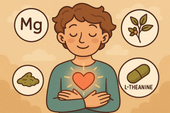
Supplements That Support Emotional Openness
Emotional openness starts in the body 🌿. When your nervous system feels safe, your heart can express freely. Learn how supplements like magnesium, Ashwagandha, and L-theanine support calm connection, balanced emotions, and the courage to stay authentically open.
-
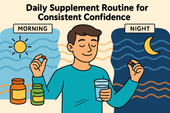
Daily Supplement Routine for Consistent Confidence
Confidence is built through rhythm, not luck 🌿. A daily supplement routine can help your energy, mood, and focus stay balanced from morning to night. Learn how adaptogens, magnesium, and B vitamins work together to create steady calm and lasting self-assurance.
-
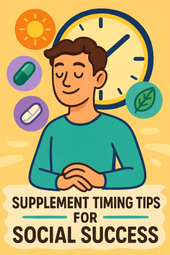
Supplement Timing Tips for Social Success
Social confidence has its own rhythm 🌿. When you time your supplements to match your body’s natural energy cycles, calm and focus align effortlessly. Learn how magnesium, L-theanine, and adaptogens can help you stay grounded, charismatic, and fully present at just the right moment.
-
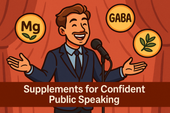
Supplements for Confident Public Speaking
Public speaking confidence begins with biology 🎤🌿. When your nervous system is calm and your neurotransmitters are balanced, your voice, focus, and presence flow naturally. Learn how supplements like magnesium, GABA, and adaptogens can align your body’s chemistry with the calm clarity you need to speak authentically.
-

Travel-Friendly Supplements for On-the-Go Confidence
Magnesium is the ultimate travel mineral for calm and balance ✈️🌿. It relaxes the nervous system, eases stress from jet lag or fatigue, and supports muscle and mental recovery. Discover how this essential nutrient keeps you centered, focused, and energized wherever your journey takes you.
-

Supplements for Confident Video Calls
Magnesium is the mineral that brings calm to both body and mind 🌿. It supports relaxation, better sleep, and a stable mood by regulating cortisol and soothing the nervous system. Learn how magnesium supplements can restore balance, reduce anxiety, and help you feel centered under stress.
-

Ashwagandha for Calming the Stress Response
Ashwagandha helps your body remember how to relax 🌿. As one of the most trusted adaptogens, it calms the stress response by lowering cortisol, soothing the nervous system, and restoring natural energy balance. Learn how this ancient herb promotes deeper sleep, emotional steadiness, and resilience in today’s high-stress world.
-
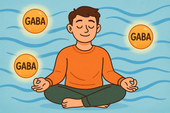
How GABA Supplements Can Help You Feel Grounded
GABA is the brain’s natural calm signal 🌿. When life feels overwhelming, this neurotransmitter helps quiet mental noise, relax muscles, and restore emotional balance. Learn how GABA supplements can calm the nervous system, reduce anxiety, and help you feel grounded in your body again.
-
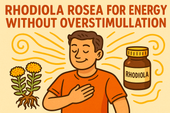
Rhodiola Rosea for Energy Without Overstimulation
Rhodiola rosea offers a rare kind of energy — one rooted in calm, not chaos 🌿. Known as the golden root, this adaptogen enhances endurance, focus, and mood by balancing cortisol and supporting the nervous system. Discover how Rhodiola restores natural vitality without the overstimulation of caffeine or stress-driven fatigue.
-
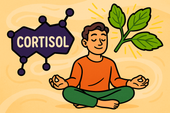
Holy Basil and Cortisol Control
Holy basil, or Tulsi, is one of nature’s most powerful adaptogens 🌿. Revered in Ayurvedic medicine for centuries, it helps balance cortisol, calm the mind, and protect the body from stress. Learn how holy basil restores hormonal harmony, supports energy, and promotes emotional resilience in a fast-paced world.
-
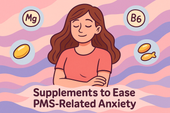
Supplements to Ease PMS-Related Anxiety
Hormones are the body’s messengers — guiding mood, energy, metabolism, and balance. 🌿 When these chemical signals flow in harmony, life feels stable and calm. Learn how nutrients, sleep, and stress management help keep hormonal communication clear, supporting emotional steadiness and overall vitality.
-
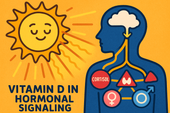
The Role of Vitamin D in Hormonal Signaling
Testosterone is more than a hormone — it’s a signal of strength, motivation, and vitality 💪. Learn how this key molecule shapes energy, mood, muscle growth, and focus in both men and women. Discover how nutrition, vitamin D, and minerals like zinc and magnesium support healthy testosterone signaling for balanced power and performance.
-
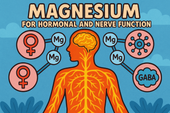
Magnesium for Hormonal and Nerve Function
Magnesium is the mineral that connects calm and vitality ⚡. It fuels nerve transmission, supports hormonal balance, and restores the body’s ability to relax under stress. Learn how magnesium strengthens communication between the nervous and endocrine systems, stabilizing cortisol, thyroid, and reproductive hormones for true equilibrium.
-

Zinc and Its Role in Hormonal Stability
Zinc is one of the body’s most powerful regulators ⚖️—a trace mineral that keeps hormones, metabolism, and energy in perfect rhythm. Learn how zinc supports testosterone, thyroid function, cortisol balance, and emotional stability while protecting against modern stress and deficiency. Discover why restoring zinc can help your body feel grounded, focused, and hormonally resilient.
-
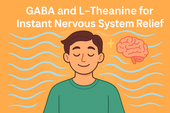
GABA and L-Theanine for Instant Nervous System Relief
When stress hits, your nervous system needs relief — not more stimulation 🌿. Discover how GABA and L-theanine work together to calm the body, quiet racing thoughts, and restore inner balance. Learn the science behind these natural compounds that ease tension, support emotional stability, and bring instant peace without sedation.
-
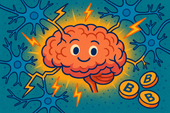
B-Vitamins for Faster Nerve Communication
Vitamin B1, or thiamine, is your brain’s ignition key 🔑—turning food into cellular energy and powering rapid nerve signaling. Discover how this essential nutrient fuels neurotransmitter activity, supports focus and coordination, and prevents fatigue or mental fog. Learn why maintaining optimal thiamine levels keeps your nerves firing fast and your mind sharp.
-

Supplements That Help You Stay Alert Without Anxiety
L-theanine is nature’s secret for calm focus and balanced energy 🌿. Found in green tea, this gentle amino acid promotes relaxation, supports alpha brain waves, and helps you stay alert without stress or grogginess. Discover how L-theanine can enhance focus, improve sleep quality, and restore mental calm in a fast-paced world.
-
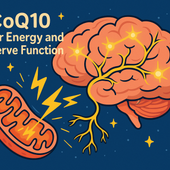
CoQ10 for Energy and Nerve Function
CoQ10 powers every cell in your body—from your heart to your brain ⚡. Learn how this essential compound fuels mitochondria, boosts nerve function, and protects your brain from oxidative stress. Discover how supplementing with CoQ10 can restore energy, sharpen focus, and support long-term neurological vitality.
-
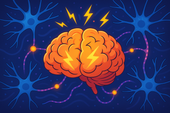
Supplements That Support Nerve Signaling for Mental Energy
Your brain’s electrical network depends on magnesium—one of the most vital minerals for nerve signaling, calm focus, and steady mental energy ⚡. Learn how this essential nutrient powers neurotransmission, supports relaxation, and helps protect your nervous system from stress overload—so your mind feels balanced, alert, and resilient every day.
-
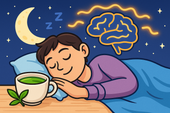
L-Theanine for Sleep Without Grogginess
L-theanine offers a natural path to better sleep—without the next-day fog. 🌙 Found in green tea, this gentle amino acid calms the mind, lowers stress hormones, and promotes deep relaxation without sedation. Learn how L-theanine balances your brainwaves, reduces nighttime anxiety, and helps you wake up refreshed, alert, and clear-minded.
-

Supplements to Support the Circadian Rhythm
Your body’s natural clock depends on more than just sunlight—it also relies on key nutrients to stay in sync. 🌞🌙 Discover the best supplements to support your circadian rhythm, from melatonin and magnesium for deep sleep to vitamin D and adaptogens for morning energy. Learn how to realign your internal clock for better rest, sharper focus, and stable mood every day.
-

Melatonin and Cortisol: The Night vs. Day Hormones
Melatonin and cortisol are your body’s night-and-day hormones—one helping you drift into deep sleep, the other powering your alertness each morning. 🌙☀️ Learn how these two forces work together to regulate your energy, mood, and recovery. Discover how modern stress, artificial light, and poor routines can throw them off balance—and how to naturally reset your rhythm for calm nights and focused days.
-

Supplements for Deeper Sleep and Nervous System Reset
Struggling to sleep even when you’re exhausted? 🌙 Discover how to reset your nervous system and achieve deeper, more restorative rest with the right blend of supplements, breathwork, and therapy. From magnesium and L-theanine to slow exhalations and somatic healing, this guide helps you rebuild your body’s natural rhythm of calm and recovery—so you can wake up truly renewed.
-
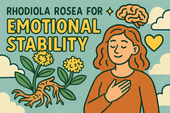
Rhodiola Rosea for Emotional Stability: Finding Balance Through Resilience
Stress is the body’s natural alarm system — useful in bursts, but draining when it never turns off. Learning to regulate it helps restore calm focus, emotional balance, and physical vitality. 🌿💫
-
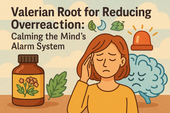
Valerian Root for Reducing Overreaction: Calming the Mind’s Alarm System
GABA is the brain’s natural brake pedal — calming overstimulation and helping you think clearly under stress. When balanced, it brings a sense of inner peace, emotional control, and focus. 🌿🧠💫
-

Supporting Adrenal Health for a Steadier Mood
Cortisol is the body’s built-in stress alarm — essential in short bursts but harmful when constantly elevated. Learning to balance it naturally restores calm, focus, and emotional stability. 🌿⚖️
-

Cold Showers and Adaptogens for a Reset: Reclaiming Energy, Calm, and Control
Adaptogens help the body adapt to stress, restoring calm energy and balance. These ancient herbs strengthen resilience, regulate mood, and support focus — helping you stay grounded through life’s ups and downs. 🌿💫
-
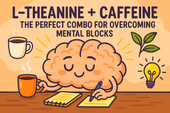
L-Theanine + Caffeine: The Perfect Combo for Overcoming Mental Blocks
Neurotransmitters are the brain’s messengers — tiny molecules that shape how we think, feel, and focus. When they’re in balance, we experience calm energy, clear thinking, and emotional harmony. 🌿🧠✨
-
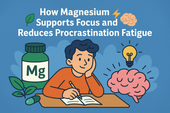
How Magnesium Supports Focus and Reduces Procrastination Fatigue
Magnesium is the quiet mineral behind mental clarity and steady focus. By calming the nervous system and restoring cellular energy, it helps transform fatigue and overthinking into calm, productive flow. 🌿⚡🧠
-

B Vitamins for Beating Procrastination and Boosting Energy
Procrastination isn’t just a mindset — it’s often a signal of low energy and nutrient depletion. B vitamins recharge the brain’s motivation circuits, boosting focus, clarity, and the drive to take action. 🌿⚡🧠
-
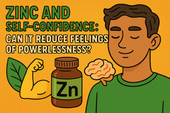
Zinc and Self-Confidence: Can It Reduce Feelings of Powerlessness?
Zinc isn’t just a mineral — it’s the foundation of emotional strength. By balancing neurotransmitters and calming the nervous system, it helps you feel more centered, assertive, and confident from the inside out. 🌿💪
-
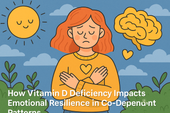
How Vitamin D Deficiency Impacts Emotional Resilience in Co-Dependent Patterns
Co-dependency is the emotional tug-of-war between connection and self-loss — a pattern born from giving too much and receiving too little. Learning to untangle this dynamic allows for real love rooted in balance, not fear. 🌿💛
-
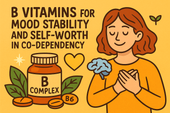
B Vitamins for Mood Stability and Self-Worth in Co-Dependency
Vitamin B1, or thiamine, powers both the body and the brain — fueling focus, energy, and emotional clarity. Supporting your nervous system with this essential nutrient helps restore calm and mental resilience. 🌿⚡🧠
-
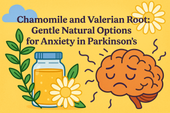
Chamomile and Valerian Root: Gentle Natural Options for Anxiety in Parkinson’s
Anxiety often feels like a storm inside the mind — racing thoughts, tightness, and unease that make it hard to focus or rest. But learning to understand and calm that inner storm opens the door to peace and emotional balance. 🌿🧠
-
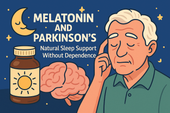
Melatonin and Parkinson’s: Natural Sleep Support Without Dependence
Melatonin is the body’s natural sleep hormone — guiding your mind into rest and your body into recovery. Supporting its natural rhythm can improve sleep quality, mood, and overall health without dependence. 🌙🧠
-
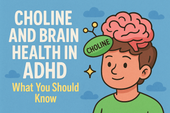
Choline and Brain Health in ADHD: What You Should Know
Inflammation can quietly affect both the body and mind, disrupting focus, mood, and energy. Understanding how it works — and how to calm it — is key to restoring balance, clarity, and long-term health. 🌿🧠
-
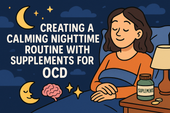
Creating a Calming Nighttime Routine with Supplements for OCD
Sleep is the brain’s nightly repair ritual — a time when emotional chaos settles and clarity returns. Prioritizing deep rest restores focus, calm, and resilience, helping both the body and mind recover naturally. 🌙🧠
-
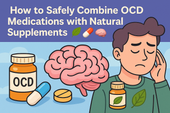
How to Safely Combine OCD Medications with Natural Supplements
Supplements bridge the gap between nutrition and mental wellness — supporting focus, calm, and energy from within. The right combination of nutrients can help balance mood, sharpen the mind, and restore long-term resilience. 🌿🧠
-
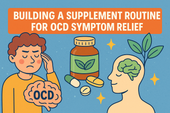
Building a Supplement Routine for OCD Symptom Relief
OCD can feel like being trapped in your own thoughts — a battle between control and chaos. Understanding the science behind these cycles is the first step toward breaking free and finding calm within the mind. 🌿🧠
-
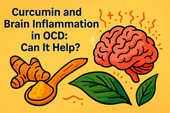
Curcumin and Brain Inflammation in OCD: Can It Help?
Inflammation doesn’t just affect the body — it can silently influence the brain, fueling anxiety, fatigue, and mental fog. By understanding how inflammation works, we can learn how to calm the nervous system and restore inner balance. 🌿🧠
-
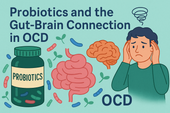
Probiotics and the Gut-Brain Connection in OCD
Serotonin, often called the “feel-good” chemical, shapes our mood, focus, and emotional balance. By keeping this neurotransmitter in harmony, we support calm thinking, better sleep, and greater mental resilience. 🌿🧠
-

B Vitamins and OCD: Supporting Energy and Neurotransmitter Balance
OCD isn’t just about habits — it’s about the brain’s struggle to find control in chaos. Understanding the neurological roots behind intrusive thoughts can help replace fear with clarity and guide healing toward calm awareness. 🌿🧠
-
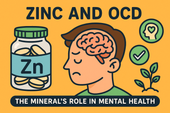
Zinc and OCD: The Mineral’s Role in Mental Health
Zinc is more than a trace mineral — it’s a key regulator of mood, memory, and emotional balance. By stabilizing neurotransmitters like serotonin and glutamate, zinc helps calm obsessive thought patterns and supports overall mental clarity. 🌿🧠
-
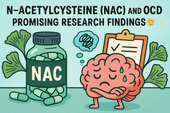
N-Acetylcysteine (NAC) and OCD: Promising Research Findings
Antioxidants act as the body’s natural defense system, neutralizing free radicals that damage brain cells and worsen anxiety or fatigue. Supporting antioxidant balance with nutrition and supplements helps protect focus, memory, and emotional stability. 🌿🧠
-
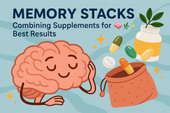
Memory Stacks: Combining Supplements for Best Results
Memory weaves the story of who we are — connecting past, present, and future through every experience we store and recall. Strengthening memory means nurturing the brain’s energy, balance, and emotional calm so learning becomes effortless. 🌿🧠
-
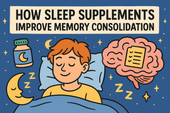
How Sleep Supplements Improve Memory Consolidation
Stress can cloud thinking, disrupt sleep, and weaken memory — but understanding its effects on the brain is the first step toward calm. By learning to regulate the nervous system, we can protect focus, energy, and emotional balance. 🌿🧠
-
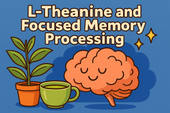
L-Theanine and Focused Memory Processing
Science is the art of curiosity and precision — a quest to understand the unseen patterns that shape life. From molecules to galaxies, every discovery begins with observation, imagination, and the courage to ask “why.” 🔬💡
-
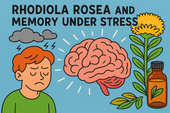
Rhodiola Rosea and Memory Under Stress
Stress clouds memory, slows thinking, and drains energy — but the good news is, the brain can recover. By understanding how stress affects focus and emotion, we can learn to regulate it, restore clarity, and protect long-term cognitive health. 🌿🧠
-

Ashwagandha for Stress-Related Memory Issues
Adaptogens are nature’s answer to modern stress. These powerful herbs — like Ashwagandha, Rhodiola, and Holy Basil — help balance cortisol, support calm focus, and strengthen the body’s resilience, bringing the mind back to harmony. 🌿🧘♀️


















































